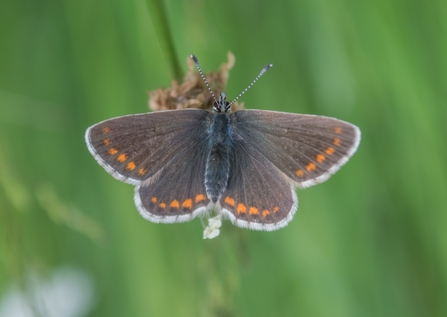In conservation, we talk a lot about the importance of creating and preserving habitat for species survival — if you don’t have the habitat then you won’t have the species. But that theory is so much better illustrated with an example. And the relationship between the northern brown argus butterfly and the common rockrose is a perfect one.
The northern brown argus is extremely rare and a Priority species under the UK Post-2010 Biodiversity Framework. This means it's one of our most threatened wildlife species and requires urgent conservation action to avoid becoming extinct.
Conservation action is exactly what we’re doing at Wild Ingleborough!
Found only in the north of England and Scotland, the northern brown argus is a close relative of the brown argus butterfly. It has the same striking white wing margins, but its overall colour is a deeper chocolate brown. It prefers warmth and shelter, and favours south-facing sites with hollows and scrub.


